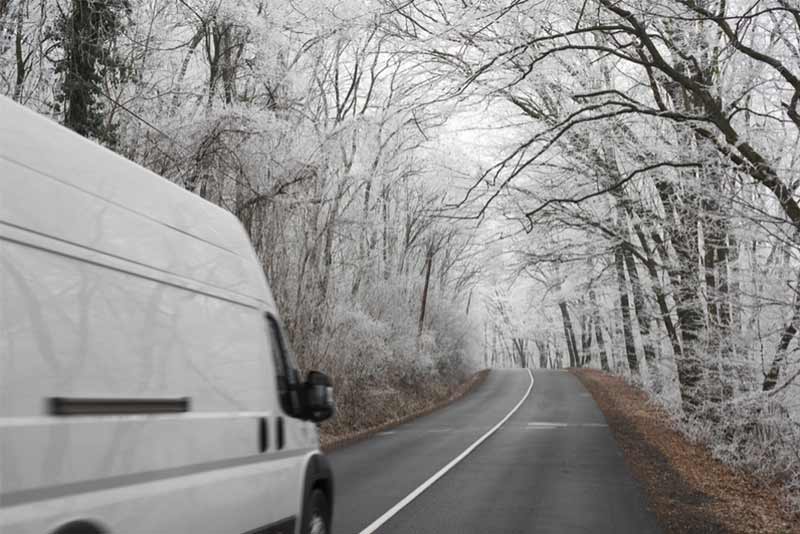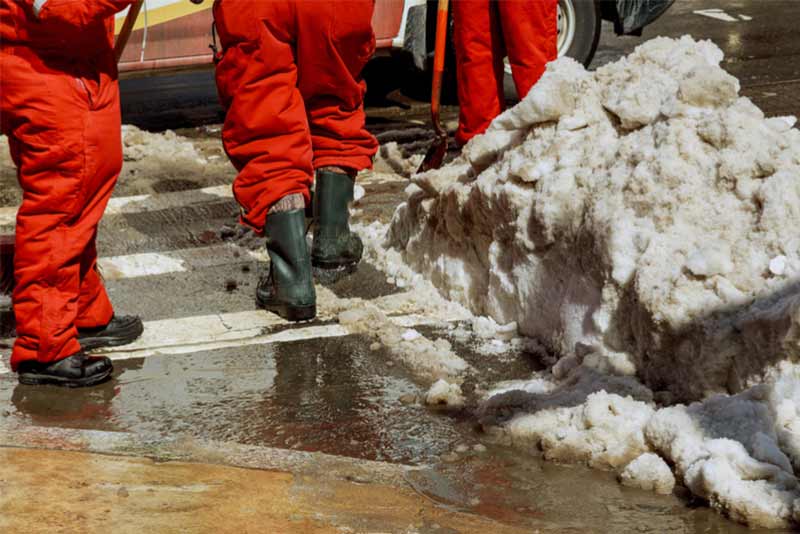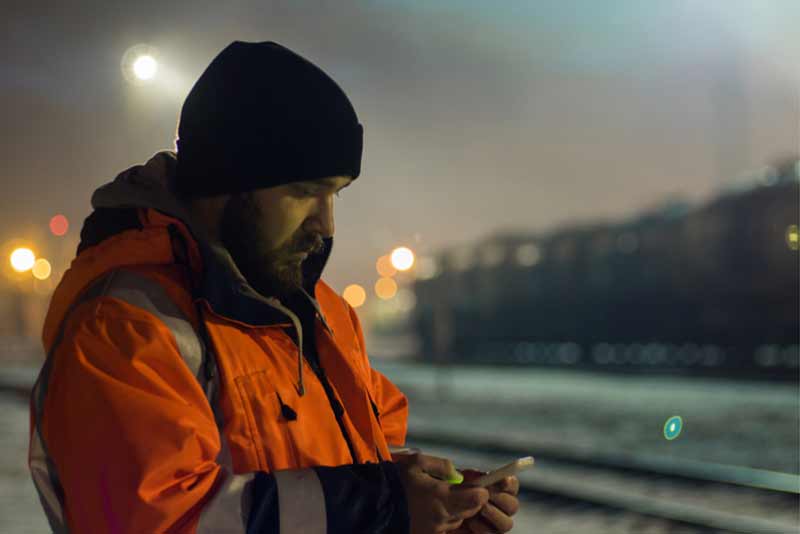How to prepare your business for cold waves in the aftermath of the Beast of the East
When the autumn and winter months roll around each year, businesses know to be prepared for their colder temperatures and harsher weather conditions, all of which can present great risks to the health, safety and well-being of their workers. This is a particular concern for those who are often required to work outdoors, which includes employees in construction, aggregates, and the wider industrial sector. With this in mind, businesses should also be prepared for unexpected cold waves, like this year’s ‘Beast of the East’, which hit the UK suddenly in February 2018. This caused considerable business disruption and created many additional health and safety risks for industrial workers.
The Beast of the East is aptly named, describing the cold and wintery conditions that were brought to the UK from easterly winds that were swept across from Siberia. This resulted in blankets of snow and extremely low temperatures across the country, which caused chaos in the form of burst pipes (which left 2000,000 homes without water), closed schools, undermanned hospitals, and extreme disruption to railways, roads and airports. Research by energy charities National Energy Action and Energy Action Scotland also concluded that last year’s Beast of the East caused around 2,000 extra deaths during its 10-day lifespan. According to the study, most of these deaths were caused by flu viruses, hypothermia, trips and falls, heart attacks and lung problems.

Health and safety risks facing employees in winter
Winter already brings additional health and safety hazards for workers for a number of reasons. These include (but are not limited to):
- Slips, trips and falls caused by walking on icy paths and wet surfaces.
- Cold stress and related conditions (such as trench foot, frostbite and hypothermia) caused by prolonged exposure to extremely low temperatures and adverse weather conditions.
- Being hit by falling objects due to workers not being able to identify hazards in low light levels.
- Being hit by a moving vehicle due to employees not being seen in dark working environments.
- Traffic accidents caused by driving in low light levels and adverse weather conditions.
- The spread of cold and flu viruses when working in enclosed spaces.
According to HSE (the Health and Safety Executive), 40% of major work-related injuries are caused by slips, trips and falls, making them the most common accidents to occur in the workplace. Due to heavy rain and icy conditions, this risk is only heightened in the colder months, with figures from the Hospital Episode Statistics for England showing that 2,919 people were admitted to hospital in 2014/15 due to them falling over on snow or ice.

As RoSPA also explains, although less people tend to drive in snowy and icy conditions, many still take that risk, and winter weather is still a leading cause of traffic accidents. As figures from the Department for Transport (DfT) show, 29 people in the UK were killed in reported accidents where there was snow or ice on the road in 2014.
Unfortunately, weather experts have predicted that Britain is due to face another bitterly cold winter, much like the Beast of the East we experienced back in February. Some computer models indicate that temperatures could soon plummet to below average, bringing with it a heightened risk of heavy snow – and this could last until next February. In fact, January and February are set to be the coldest months, according to Dr David Reynolds, a senior meteorologist with The Weather Company.
Although UK businesses should always be prepared for adverse weather conditions in the autumn and winter months, it’s particularly important that they have the correct Health and Safety procedures in place in the event of another cold wave hitting the country.
Winter health and safety legislation
HSE dictates that under health and safety law, all workers have the right to work in places where risks to their health and safety are properly controlled, and employers have a legal and moral obligation to protect the health, safety and well-being of their staff and any visitors to their business premises. This involves (but is not limited to):
- Complete a risk assessment to determine what could cause harm to employees when working and take the necessary precautions to prevent this from happening.
- Explain to your staff how the risks can be controlled and who is responsible for this.
- Provide employees with health and safety training and any protective workwear or equipment they need free of charge. You should also ensure that it’s correctly maintained.
- Provide toilets, washing facilities, drinking water and adequate first-aid equipment.
As part of this, workers are also required to follow the training they have received from their employer, take reasonable care to protect their own and health safety (and that of others) in the workplace, and tell someone (such as a supervisor) if they think something is creating a health and safety hazard.
HSE also brings attention to the fact that in autumn and winter, additional hazards are created due to exposure to cold temperatures, and the likes of leaves, ice and snow on the ground causing slips, trips and falls. As they explain, employers should consider and properly manage these risks.
However, one of the areas where this proves difficult is in terms of appropriate working temperatures. For businesses in the UK, the Approved Code of Practice suggests that indoor workplaces should be at least 16C in temperature. However, they only need to be 13C if workers are required to exert rigorous physical effort. Alternatively, for outdoor working environments, there isn’t a minimum temperature, though employers should complete a risk assessment to determine if it’s too cold for outdoor workers. As Worksmart explains, businesses have a duty of care to protect their employees and asking them to work in extreme cold could be a clear breach of this.
When conducting a risk assessment, remember to take into account that wind chill factor can make it feel colder than the temperature actually indicates it to be. Additionally, it’s important to keep in mind that cold stress can be caused by working in conditions that are below 12C.

The safety risks your business should be prepared for
Below, we outline the main health and safety risks your workers and any visitors to your premises may face during cold waves, and the steps your business should take to prevent them from occurring:
Cold stress conditions
‘Cold stress’ refers to the health conditions and emergencies that can arise due to exposure to extreme cold weather, whether this be through submersion in water or simply spending a prolonged period of time in cold temperatures or adverse weather conditions. Cold stress conditions, such as hypothermia, frostbite, trench foot and chilblains have various causes, such as:
- Hypothermia – the body losing heat faster than it can be produced
- Frostbite – reduced blood flow due to exposed body parts freezing
- Trench foot – the feet having prolonged exposure to wet and cold conditions
- Chilblains – repeated exposure to freezing and boiling temperatures
To prevent cold stress and cold-related illnesses from effecting outdoor workers, you should schedule work to be completed during the warmest parts of the day and ensure they don’t work outside during times when extremely cold temperatures and adverse weather conditions are predicted. Additionally, during times when they are working outside, ensure they are provided with protective workwear and PPE (Personal Protective Equipment) that adequately protects them from the elements. At phs Besafe,
we ensure our protective garments have heavy-duty zips that are reinforced with a press stud overlap to limit wind chill effect.
Education is also extremely important. Make sure your employees are aware of the symptoms of each of these conditions (such as shivering and confusion in the early stages of hypothermia), and that they know the correct steps to take if they think they or another worker are affected by them.
Slips, trips and falls
They might be the most common workplace incident, but there are a number of steps you can take to reduce slips, trips and falls from occurring in your workplace or your employees’ various other working environments. These include:
- Installing entrance mats and matting systems in your premises to collect leaves, rain and other debris from people’s shoes and preventing it from being walked into your workplace.
- Displaying a Wet Floor sign in areas that are slippery due to rain and debris.
- Organising for your building’s external paths to be frequently cleared of leaves, snow and ice.
- Ensuring external paths leading into your building are gritted when needed.
- Providing your workers with slip-resistant footwear or other appropriate protective footwear.
Accidents on the road
In industries where employees are frequently required to hit the road (such as construction), accidents caused by people driving in adverse weather conditions are also a growing concern. Not only can heavy rain, fog and snow make it difficult to see on the road, but heavy rain can also cause cars to aquaplane, while leaves, snow and ice on the road can also cause cars to skid.
As well as checking that the conditions are appropriate for driving before arranging for your employees to set out on their journeys, the main thing you should do is educate them on how to drive safely and appropriately in different weather conditions. According to figures from Direct Line, 97,256 casualties on Britain’s road had ‘speeding’ as a contributing factor. This combined with trickier driving conditions due to cold waves and general winter weather is a considerable health and safety hazard.
At phs Besafe, we care about the health and safety of your employees and we provide our protective workwear supply and laundering services to over 3,000 sites across the UK. To find out more about our workwear supply and rental, industrial laundering, and secure garment destruction services for businesses, contact us today.